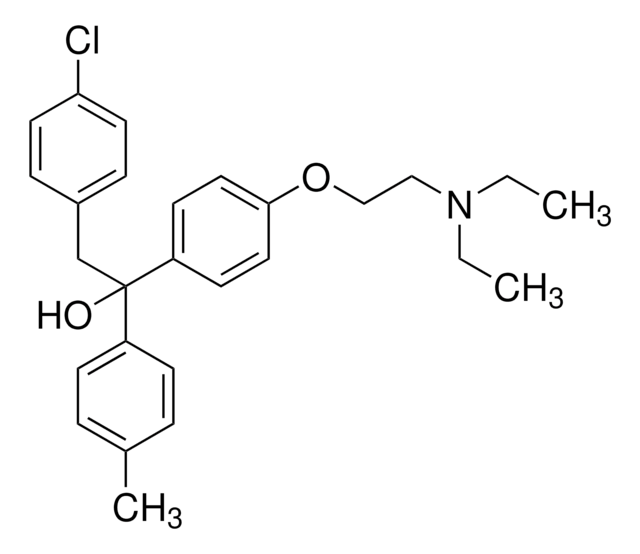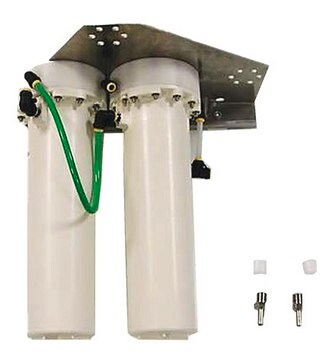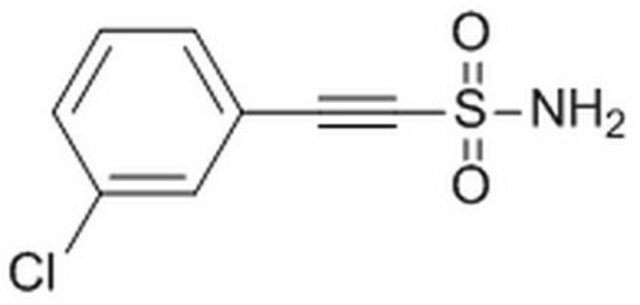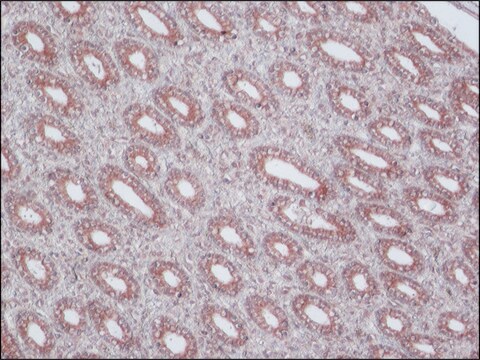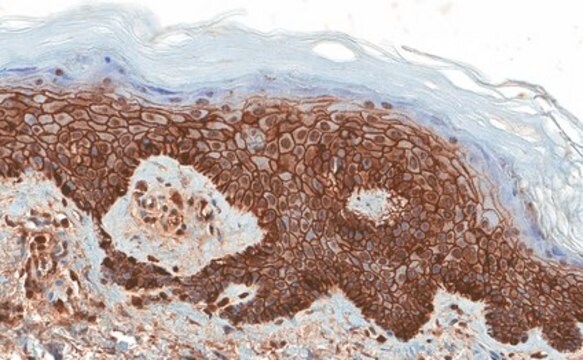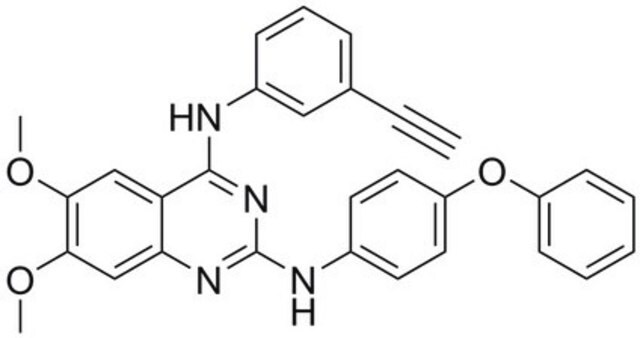推荐产品
生物源
mouse
品質等級
抗體表格
purified immunoglobulin
抗體產品種類
primary antibodies
無性繁殖
AE5, monoclonal
物種活性
rabbit, bovine
技術
immunofluorescence: suitable
immunohistochemistry: suitable
western blot: suitable
同型
IgG1κ
NCBI登錄號
UniProt登錄號
運輸包裝
wet ice
目標翻譯後修改
unmodified
基因資訊
human ... KRT3(3850)
一般說明
Cytokeratin 3, also known as 65kDa Cytokeratin or Keratin K3 is a specific keratin found primarily in the corneal epithelium and minorly in other epithelium like that of the esophagus. The corneal epithelium tissue forms the outermost layer of the cornea, which is the clear front covering of the eye. Keratins are divided into two primary types based upon their isoelectric mobility and size, acidic, or type 1:40-55kDa, and basic to neutral or type 2, 56-70kDa. Cytokeratin 3 is a type II cytokeratin. Type II cytokeratins form pairs with other cytokeratins. Cytokeratin 3 is expressed in the corneal epithelium with Cytokeratin 12. Together Cytokeratin 3 and Cytokeratin 12 form molecules known as intermediate filaments. These filaments assemble into strong networks that provide strength and resilience to the corneal epithelium. Mutations in Cytokeratin 3 have been associated with Meesmann′s Corneal Dystrophy a disease characterized by fragility of the anterior corneal epithelium.
免疫原
Whole cells corresponding to Rabbit Keratin, type II cytosleletal 3.
應用
Immunohistochemistry Analysis: A 1:1000 dilution from a representative lot detected Keratin K3/K76 in bovine cornea epithelial cells.
Immunohistochemistry Analysis: A representative lot was used by an independent laboratory in Keratin 3 expressed epithelial cells on the surface of submerged and AL explants, indicating that they were derived from limbal progenitor cells via migration. (Kawakita, T., et al. (2005) Am J Pathol, 167:381-93.).
Western Blotting Analysis: A representative lot was used by an independent laboratory in Rabbit epithelial Keratin lysate. (Schermer, A, et al. (1986) J. Cell Biol., 103: 49-62).
Western Blotting Analysis: A representative lot was used by an independent laboratory in rabbit corneal tissue lysate. (Cooper, D., et al. (1986) J. Biol. Chem., 261: 4646-54).
Immunocytochemistry Analysis: A representative lot was used by an independent laboratory in human limbal stem cells cultured in medium supplemented with human EGF. (Sharifi, A.M., et al. (2010) Biocell. 34(1):53-55).
Immunofluorescence Analysis: A representative lot was used by an independent laboratory in rabbit corneal and limbal tissues, limbal explant, and epithelial outgrowth on human AM. (Wang D.Y., et al. (2003) Invest Ophthalmol Vis Sci. 44(11):4698-704).
Immunofluorescence Analysis: A representative lot was used by an independent laboratory inRabbit corneal epithelial Keratin cells. (Schermer, A, et al. (1986) J. Cell Biol., 103: 49-62).
Immunohistochemistry Analysis: A representative lot was used by an independent laboratory in Keratin 3 expressed epithelial cells on the surface of submerged and AL explants, indicating that they were derived from limbal progenitor cells via migration. (Kawakita, T., et al. (2005) Am J Pathol, 167:381-93.).
Western Blotting Analysis: A representative lot was used by an independent laboratory in Rabbit epithelial Keratin lysate. (Schermer, A, et al. (1986) J. Cell Biol., 103: 49-62).
Western Blotting Analysis: A representative lot was used by an independent laboratory in rabbit corneal tissue lysate. (Cooper, D., et al. (1986) J. Biol. Chem., 261: 4646-54).
Immunocytochemistry Analysis: A representative lot was used by an independent laboratory in human limbal stem cells cultured in medium supplemented with human EGF. (Sharifi, A.M., et al. (2010) Biocell. 34(1):53-55).
Immunofluorescence Analysis: A representative lot was used by an independent laboratory in rabbit corneal and limbal tissues, limbal explant, and epithelial outgrowth on human AM. (Wang D.Y., et al. (2003) Invest Ophthalmol Vis Sci. 44(11):4698-704).
Immunofluorescence Analysis: A representative lot was used by an independent laboratory inRabbit corneal epithelial Keratin cells. (Schermer, A, et al. (1986) J. Cell Biol., 103: 49-62).
Research Category
Cell Structure
Cell Structure
Research Sub Category
Cytokeratins
Cytokeratins
This Anti-Keratin K3/K76 Antibody, clone AE5 is validated for use in Western Blotting and Immunohistochemistry and Immunofluorescence for the detection of Keratin K3/K76.
品質
Evaluated by Western Blotting in Rabbit eye (cornea) cell lysate.
Western Blotting Analysis: 0.05 µg/mL of this antibody detected Keratin K3/K76 in 10 µg of Rabbit eye (cornea) cell lysate.
Western Blotting Analysis: 0.05 µg/mL of this antibody detected Keratin K3/K76 in 10 µg of Rabbit eye (cornea) cell lysate.
標靶描述
~60 kDa observed
聯結
Replaces: CBL218
外觀
Protein G Purified
Format: Purified
Purified mouse monoclonal IgG1κ in buffer containing 0.1 M Tris-Glycine (pH 7.4), 150 mM NaCl with 0.05% sodium azide.
儲存和穩定性
Stable for 1 year at 2-8°C from date of receipt.
其他說明
Concentration: Please refer to lot specific datasheet.
免責聲明
Unless otherwise stated in our catalog or other company documentation accompanying the product(s), our products are intended for research use only and are not to be used for any other purpose, which includes but is not limited to, unauthorized commercial uses, in vitro diagnostic uses, ex vivo or in vivo therapeutic uses or any type of consumption or application to humans or animals.
未找到合适的产品?
试试我们的产品选型工具.
儲存類別代碼
12 - Non Combustible Liquids
水污染物質分類(WGK)
WGK 1
閃點(°F)
Not applicable
閃點(°C)
Not applicable
Differentiation-related expression of a major 64K corneal keratin in vivo and in culture suggests limbal location of corneal epithelial stem cells.
Schermer, A; Galvin, S; Sun, TT
The Journal of cell biology null
Intrastromal invasion by limbal epithelial cells is mediated by epithelial-mesenchymal transition activated by air exposure.
Kawakita, T; Espana, EM; He, H; Li, W; Liu, CY; Tseng, SC
The American Journal of Pathology null
Monoclonal antibody analysis of bovine epithelial keratins. Specific pairs as defined by coexpression.
Cooper, D and Sun, T T
The Journal of Biological Chemistry, 261, 4646-4654 (1986)
Propagation and phenotypic preservation of rabbit limbal epithelial cells on amniotic membrane.
Wang, DY; Hsueh, YJ; Yang, VC; Chen, JK
Investigative Ophthalmology & Visual Science null
我们的科学家团队拥有各种研究领域经验,包括生命科学、材料科学、化学合成、色谱、分析及许多其他领域.
联系技术服务部门

